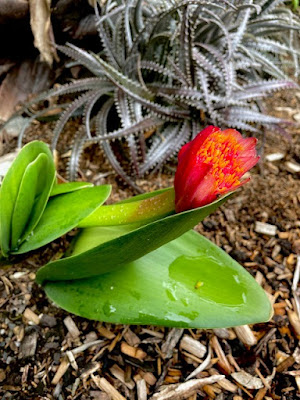DESIGN ELEMENTS
Warm Bulbs What Are They?
Spring flowering bulbs like daffodils, tulips, freesias, bluebells, to name a few are all bulbs from the northern hemisphere. They do best in cool climates and once the main spring show is over, there's nothing left to excite.- It's time to changeup or simply extend the flowering season to what garden designer Peter Nixon terms 'warm bulbs.'
- These come from warmer climates such as South Africa and South America, therefore are more suited to a large part of eastern Australia-the 'cool sub trops.' (Cool sub-tropical).
- The other benefits of these spectacular bulbs are that they flower much later and longer; late spring into summer and even autumn.
Warm Bulbs part 4-Dry Shade and Moist shade
What kind of shade? NOT GLOOM!
Try the following Cliveas
Clivea nobilis -umbel with many florets, starting in late winter; variable colours from pale orange to deep orange red with green tips.
Clivea nobilis -umbel with many florets, starting in late winter; variable colours from pale orange to deep orange red with green tips.
Clivea gardenii-tubular and pendulous flowers; orange to red, however yellow and pink clones are also sometimes available to the plant collector.
Clivea caulescens-flowers pendulous and tubular; orange-red with green tips
Clivea robusta-pendulous flowers with green tips
Bright shade will keep them happy. Full sun will fade the dark green to a pale washed out green and at worst, will burn the leaves
- Keep one thing in mind. Where the leaf union comes together, it has to be well above the soil otherwise the clivea will rot.
- As the roots push the upwards, DON'T be tempted to cover up the root system with more soil.
- Leaf litter or a leaf mulch is fine, but these grow in high rainfall areas and require their root system to be not sitting in water.
Moist Shade:
Eucaris amazonica, flowers in high summer, usually around February, with pure white flowers with a green cup centre, almost daffodil-like.
Listen to the podcast for more information
Listen to the podcast for more information
Instagram paradisus_sea_changer FB Paradisus Garden Design
If you have any questions or feedback for me or Peter about these bulbs, why not write in to realworldgardener@gmail.com or info@peternixon.com.au
















